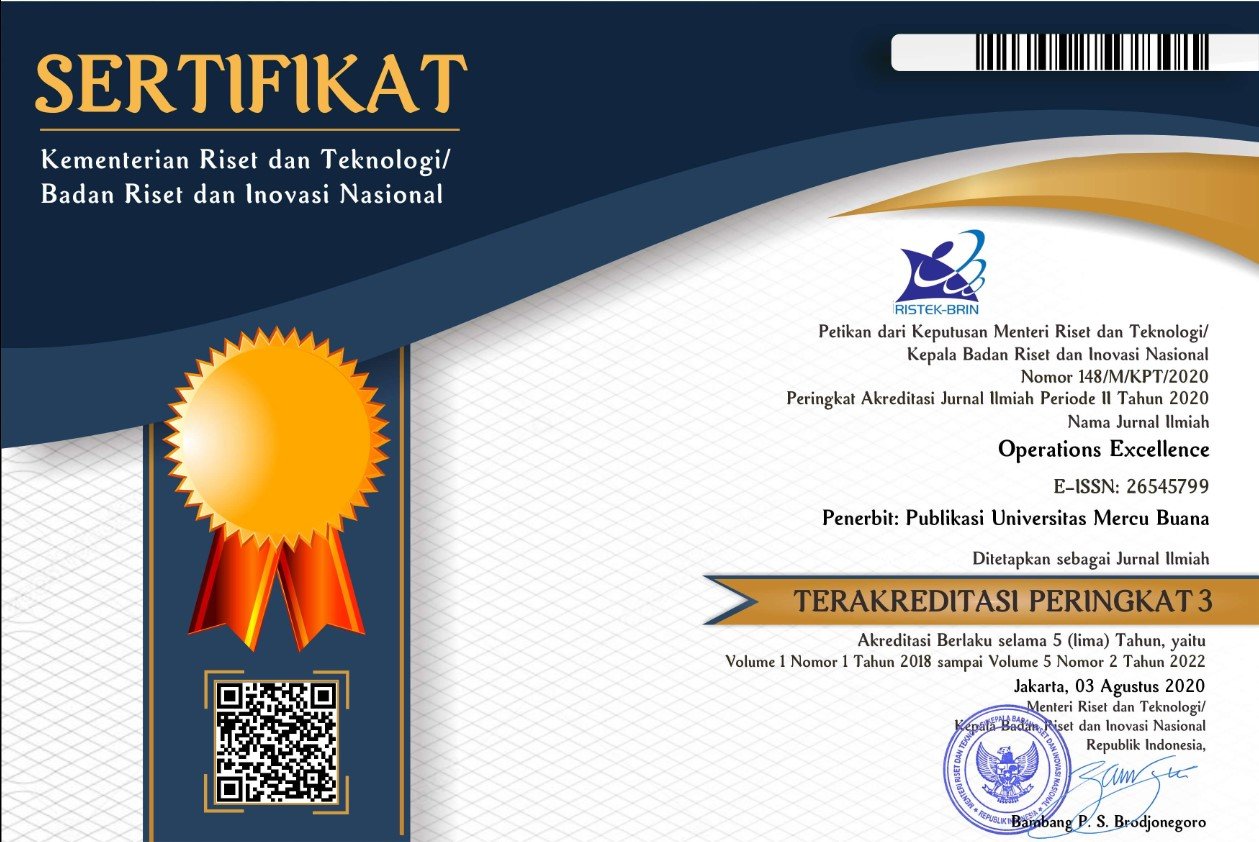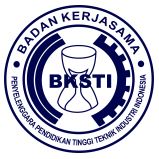Business conceptual design of photovoltaic installation for billboard lighting
Abstract
Keywords
Full Text:
PDFReferences
Al-Ezzi, A. S., & Ansari, M. N. M. (2022). Photovoltaic Solar Cells: A Review. Applied System Innovation, 5(4), 1–17. https://doi.org/10.3390/asi5040067
Arena. (2014). Commercial Readiness Index for Renewable Energy Sectors. In Australian Renewable Energy Agency. https://arena.gov.au/assets/2014/02/Commercial-Readiness-Index.pdf
Brenner, W., & Adamovic, N. (2018). Standardization as a tool for promoting innovation and commercialization of a circular economy for PV waste - The example of the European H2020 project CABRISS. 2018 41st International Convention on Information and Communication Technology, Electronics and Microelectronics, MIPRO 2018 - Proceedings, 122–127. https://doi.org/10.23919/MIPRO.2018.8400024
Cai, X., Xie, M., Zhang, H., Xu, Z., & Cheng, F. (2019). Business models of distributed solar photovoltaic power of China: The Business Model Canvas perspective. Sustainability (Switzerland), 11(16). https://doi.org/10.3390/su11164322
Chirazi, J., Wanieck, K., Fayemi, P. E., Zollfrank, C., & Jacobs, S. (2019). What do we learn from good practices of biologically inspired design in innovation? Applied Sciences (Switzerland), 9(4). https://doi.org/10.3390/app9040650
Chopra, S., & Meindl, P. (2007). Supply Chain Management. Strategy, Planning & Operation. In Das Summa Summarum des Management. https://doi.org/10.1007/978-3-8349-9320-5_22
Christyono, F. (2017). Analisa Supply Chain Pada PT. Cahaya Indo Persada Fendy Christyono. Agora, 5(3), 1–6. https://publication.petra.ac.id/index.php/manajemen-bisnis/article/view/6093
Dang, M.-Q. (2017). Potential of Solar Energy in Indonesia Solar Energy in Indonesia View project Potential of Solar Energy in Indonesia (Issue April). https://www.researchgate.net/publication/324840611
Ferdous, S. M., Moin Oninda, M. A., Maruf, H., Islam, A., & Rahman, F. (2018). Energy Efficiency Constraints in Photovoltaic Power Generation Systems. Journal of Research in Engineering and Applied Sciences, 03(02), 41–47. https://doi.org/10.46565/jreas.2018.v03i02.001
Franco, M. A., & Groesser, S. N. (2021). A systematic literature review of the solar photovoltaic value chain for a circular economy. Sustainability (Switzerland), 13(17), 1–35. https://doi.org/10.3390/su13179615
Glachant, M., & Dechezleprêtre, A. (2017). What role for climate negotiations on technology transfer? Climate Policy, 17(8), 962–981. https://doi.org/10.1080/14693062.2016.1222257
Hansen, E. G., Lüdeke-Freund, F., Quan, X. I., & West, J. (2019). Cross-National Complementarity of Technology Push, Demand Pull, and Manufacturing Push Policies: The Case of Photovoltaics. IEEE Transactions on Engineering Management, 66(3), 381–397. https://doi.org/10.1109/TEM.2018.2833878
Hindle, K., & Yencken, J. (2004). Public research commercialization, entrepreneurship, and new technology-based firms: An integrated model. Technovation, 24(10), 793–803. https://doi.org/10.1016/S0166-4972(03)00023-3
Horváth, D., & Szabó, R. Z. (2018). Evolution of photovoltaic business models: Overcoming the main barriers of distributed energy deployment. Renewable and Sustainable Energy Reviews, 90(July), 623–635. https://doi.org/10.1016/j.rser.2018.03.101
Jaffe, P., Borders, K., Browne, C., DePuma, C., Longbottom, L., Nisar, H., & Simlot, V. (2019). Opportunities and challenges for space solar for remote installations. https://apps.dtic.mil/sti/pdfs/AD1082903.pdf
Kencana, B., Prasetyo, B., Berchmans, H., Agustina, I., Myrasandri, P., Richard, R. B., Panjaitan, R., & Winne. (2018). Panduan Studi Kelayakan Pembangkit Listrik Tenaga Surya (PLTS). In Tetra Tech ES Inc. (Ed.), Indonesia Clean Energy Development II (Issue November). Lembaga Pembangunan Internasional Amerika Serikat.
Laajimi, M., & Go, Y. I. (2021). Energy storage system design for large-scale solar PV in Malaysia: techno-economic analysis. Renewables: Wind, Water, and Solar, 8(1). https://doi.org/10.1186/s40807-020-00064-5
Lilipaly, E. R. M. A. P., & Dharmawan, E. A. (2021). Penggunaan Fan Type Hologram Dengan Solar Cell Sebagai Pilihan Alternatif Billboard Di Kota Ambon. Jurnal Simetrik, 11(1), 422–431. https://doi.org/10.31959/js.v11i1.621
Mahendra, I. P. D. S. (2022). Perbandingan Model Business Model Canvas Dengan Lean Canvas Pada Startup Piecework. JATISI (Jurnal Teknik Informatika Dan Sistem Informasi), 9(3), 2412–2427. https://doi.org/10.35957/jatisi.v9i3.2818
Maurya, A. (2012). Running Lean : A systematic process for iterating your web application from Plan A to a plan that works. https://books.google.com/books/value+based+marketing
Osadolor, A. O., Olagbegi, P., & Osifo, T. I. (2022). Design and Implementation of a Solar Powered Three Phase Automatic Mini Billboard. Advances in Engineering Design Technology, 4(3), 1–8. https://portal.issn.org/resource/ISSN-L/2682-5848
Osawa, Y., & Miyazaki, K. (2006). An empirical analysis of the valley of death: Large‐scale R&D project performance in a Japanese diversified company. Asian Journal of Technology Innovation, 14(2), 93–116. https://doi.org/10.1080/19761597.2006.9668620
Pigato, M. A., Black, S. J., Dussaux, D., Mao, Z., Mckenna, M., Rafaty,
R., & Touboul, S. (2020). Enabling Environments for Sustainable Energy Transitions: The Diffusion of Technology, Innovation and Investment in Low-Carbon Societies In the Book : Technology Transfer and Innovation for Low-Carbon Development. https://openknowledge.worldbank.org/bitstream/handle
Purwanto, I. (2020). Solar Cell(Photovoltaic/Pv)Solusi Menuju Pulau Mandiri Listrik. Jurnal Penelitian Dan Karya Ilmiah Lembaga Penelitian Universitas Trisakti, 5(2), 117–126. https://doi.org/10.25105/pdk.v5i2.7410
Rigo, P. D., Siluk, J. C. M., Lacerda, D. P., & Spellmeier, J. P. (2022). The competitive business model of photovoltaic solar energy installers in Brazil. Renewable Energy, 181(August 2021), 39–50. https://doi.org/10.1016/j.renene.2021.09.031
Rose, A. De, Buna, M., Strazza, C., Olivier, N., Stevens, T., & Tawil-Jamault, D. (2017). Technology Readiness Level: Guidance Principles for Renewable Energy Technologies - Final Report. In Eur 27988 En. European Commission. https://www.gransking.fo/media/2900/trl-orka.pdf
Sun, M., Zeng, W., Zhang, W., & Li, C. (2018). Study on Operation Mode of Anti-poverty Photovoltaic Project Based on Altruism Preference. IOP Conference Series: Earth and Environmental Science, 146(1). https://doi.org/10.1088/1755-1315/146/1/012033
Sutopo, W., Khofiyah, N. A., Hisjam, M., & Ma’aram, A. (2022). Performance Efficiency Measurement Model Development of a Technology Transfer Office (TTO) to Accelerate Technology Commercialization in Universities. Applied System Innovation, 5(1). https://doi.org/10.3390/asi5010021
DOI: http://dx.doi.org/10.22441/oe.2023.v15.i2.077
Refbacks
Copyright (c) 2023 Operations Excellence: Journal of Applied Industrial Engineering

This work is licensed under a Creative Commons Attribution-ShareAlike 4.0 International License.
Journal ISSN:
| Print ISSN: 2085-4293 | |
| Online ISSN: 2654-5799 |
Tim Editorial Office
Operations Excellence: Journal of Applied Industrial Engineering
Magister Teknik Industri Universitas Mercu Buana
Jl. Raya Meruya Selatan No. 1 Kembangan Jakarta Barat
Email: [[email protected]]
Website: http://publikasi.mercubuana.ac.id/index.php/oe
Journal DOI: 10.22441/oe
The Journal is Indexed and Journal List Title by:

.png)
.png)
.png)


Operations Excellence: Journal of Applied Industrial Engineering is licensed under a Creative Commons Attribution-NonCommercial-ShareAlike 4.0 International License.










